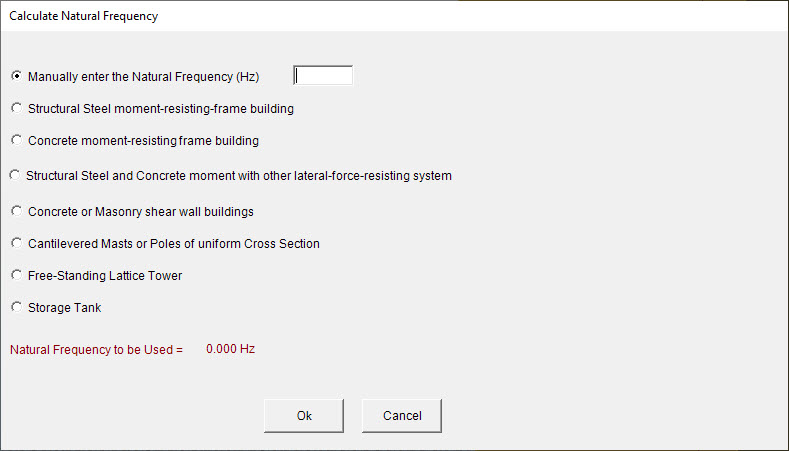ASCE 7 Flexible Gust Factor

When I was a new Engineer my boss had his stack design questioned by a client. My boss responded “Sir, I will serve you tea on the downwind side of that stack on the windiest day of the year.” That line (and disturbing image) has never left my mind. Designing tall and slender structures, such as a stack, chimney, pole, sign or even some buildings, then you really want to make sure that you could serve tea confidently next to that structure on a windy day. One important consideration on a slender structure is the consideration of the flexible gust factor. The calculation of this factor can be found in ASCE 7-16 Sec 26.11.5. It is a somewhat involved calculation which involves a lot of parameters that can be a little confusing. This article is intended to explain this factor in more detail and offer some insight into some issues that have arisen. This article is applicable to users of our MecaWind and MecaStack software.
When does ASCE 7 require use of a flexible gust factor?
When does ASME STS-1 require use of a flexible gust factor?


Do Ultimate Wind Loads Increase the Gust Factor?
ASCE 7-05 was based upon wind speeds used for Allowable Stress Design (ASD). Then starting with ASCE 7-10, the wind basis was changed to be Ultimate design. Ultimate wind speeds are higher than ASD wind speeds. For example, in Dallas, Texas an ASD wind speed would be 90 mph and a comparable Ultimate wind speed would be 105 mph (Category II). The wind speed is one of the parameters used to calculate the flexible gust factor. The gust factor calculation is unchanged from ASCE 7-05 to ASCE 7-16, and so if the wind speeds increase, then the gust factor increases. Can this be correct, why would the gust factor increase? I had this very question, and got this excellent explanation from a very knowledgeable member of the ASCE 7 committee:
When ASCE 7 adopted ultimate wind speeds as the design basis, the flexible gust factor Gf increased. Some practitioners questioned this, thinking it was simply some sort of “coefficient” that shouldn’t vary with wind speed. But this is not the case, and it was quite intentional that Gf should increase. In fact, previously Gf was based on the service (~50-yr speed), accounting for the increased dynamic response at this speed; then the ultimate response under the ultimate wind speed was estimated by multiplying by the nominal square of the wind speed factor, 1.6. This was not theoretical sound, since the dynamic response factor increases with speed faster than the speed squared. Thus multiplying the dynamically-magnified load by 1.6 results in an unconservative dynamic load under the ultimate wind speed. In fact this is one of the reasons why the ultimate wind speed is the preferred “starting place.”
This excellent explanation makes it clear that the flexible gust factor does increase and it was intentional. Now is this going to increase our wind forces acting on the structure?
Does a higher gust factor mean higher wind loads?

Does MecaWind do this automatically?
You have to determine if the structure is rigid or flexible, and that can be the hardest part on some structures. If you determine it’s flexible, you then have to determine the natural frequency and structural damping, both of which play a HUGE role in the calculation of the flexible gust factor. If you do specify that the structure is flexible and enter the natural frequency and damping, then MecaWind is going to automatically calculate the flexible gust factor.
Does MecaStack do this automatically?
Yes, this software will handle the entire process automatically. If you select ASME STS-1 as your design code, then the software is going to calculate the frequency and calculate the flexible gust factor automatically. You will need to enter or select a proper structural damping value, since that plays a major role in the gust factor calculation; however, there is some guidance on this within the software for some common scenarios. Select the structural damping and MecaStack will do the rest as far as calculating the flexible gust factor.
